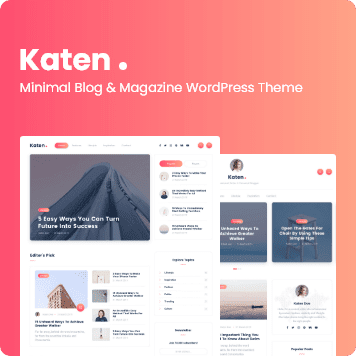

Ever get totally overwhelmed trying to master a new skill online? You’re definitely not alone—I’ve been there, scrolling endless videos and random forums, just wishing someone would explain it in a way that makes sense… without all the pressure or those “learn this FAST!” vibes.
So what’s the deal with WeLearn 2.0? Is it some secret study hack, another app lost in your downloads, or could it be the answer to all our e-learning prayers?
If your brain is screaming “ugh, do I really need another platform?” but your heart wants something easier and more social (no shade to boring courses), then you might want to stick around.
Today we’re breaking down exactly how universities—like Waterloo—are leveling up digital learning so you can actually enjoy growing your skills (with less stress, pinky promise). Get ready for real stories, smart resources, and why checking out internal platforms might be the move if you’re serious about making progress… minus the panic attacks!
How WeLearn 2.0 Turns Online Learning Into Real Connection
Let’s spill: most of us dream of snagging new skills without feeling like we’re stuck in school again—boring lectures and zero motivation included. The twist? There’s a quiet revolution happening thanks to stuff like WeLearn 2.0.
But first, what even is WeLearn 2.0? Well, based on everything floating around online (and my own very relatable Google rabbit holes), it usually means moving away from stiff lessons and into a space where collaboration is king—and learners actually have fun.
- If you ever wished classes felt more like group chats than PowerPoints from the dark ages…you’ll vibe with this.
The whole idea: ditch passive listening for active doing with peers who get where you’re coming from. Here’s what shows up again and again:
| Main Feature | Why It Matters IRL |
|---|---|
| Social Networking Tools | You swap notes & memes—not just essays—with classmates. |
| User-Created Content | Your voice = part of the lesson plan; no more one-way talking heads. |
| Personalized Feeds | Your dashboard actually cares if you’re into memes or molecular biology (or both). |
| Group Projects Go Digital | No more awkward coffee shop meetups at midnight; collab anytime. |
| Mobile-Friendly Everything | Cram while waiting for tacos. No laptop required! |
And before you roll your eyes at another “new thing,” hear me out: Some places are crushing it behind closed doors—like at [University of Waterloo](https://uwaterloo.ca/) where word on Reddit is they’ve got their own take on these internal platforms that quietly change how people learn together.
The catch? Not all this magic is plastered across Google results—or splashed everywhere on TikTok—but hunting through actual university resources will open up way more than just recycled “study tips.”
Imagine finding an entire network custom-built for how YOU learn best—all because you dared to dig past page one search results and poked around campus sites (hello extra credit energy).
The Real Scoop On University Of Waterloo’s Secret Sauce Platforms
The moment I heard whispers about mysterious internal tools lurking within the University of Waterloo’s site…I was intrigued 👀
Here’s why snooping through legit university resources could make ALL the difference:
- Bigger chance to spot exclusive collab features made just for students’ needs—not basic cookie-cutter solutions.
- You tap straight into pilot projects or beta programs long before they hit mainstream hype cycles.
- There are often hidden guides showing off real user stories—so instead of guessing if something works, you see classmates crushing goals right now.
- You unlock expert help (think: direct support channels), not just generic bots or FAQ pages nobody reads.
- If networking makes you anxious (me too!), internal spaces feel cozier—and let friendships form naturally over shared struggles.
Basically, don’t sleep on digging into official resource pages—even if they look kinda plain compared to slick influencer posts.
Check out links buried deep inside faculty newsletters or student portals; sometimes these low-key gems hold walkthroughs that blow YouTube tutorials outta the water.
Want proof? Many campus tech teams offer demo days for new platforms where YOU can test-drive features before anyone else gets access.
Long story short: If stress-free mastery sounds good but typical e-learning has failed you before…this might be what finally clicks.
Social Learning Success Stats and Real Stories with WeLearn 2.0
Ever wondered if all those “collaborative” e-learning platforms are actually helping anyone, or if they’re just another digital trend you’re supposed to care about? You’re not alone. People ask stuff like: Does social learning really work in college? Or, (raises eyebrow), does group work online just mean one person does everything? Let’s get real about what the numbers say—and how people are leveling up for real with welearn 2.0.
What the Numbers Reveal About Social Learning on Campus (With a Little Help from WeLearn 2.0)
When you hear “social learning,” do you think group chats full of memes and off-topic rants? You wouldn’t be totally wrong, but there’s way more going on behind the scenes—especially when platforms like welearn 2.0 come into play.
- The global e-learning market is exploding. By 2025, it’s expected to hit $325 billion! (Source: Global Market Insights) Turns out, folks want their education as mobile as their TikTok feed.
- Mobile-first rules the game. Mobile learning is growing at over 20% per year because students want to learn anytime, anywhere—even in line for coffee.
- Social = sticky learning experiences. Almost everyone says social features make courses more fun and engaging than listening to lectures solo. (Thank you, forums & wikis!) (Source: Towards Maturity studies)
- User-generated content takes center stage. With welearn 2.0 vibes, learners aren’t just passive—they create quizzes, share notes, and rate resources for others…which low-key makes studying feel less lonely and a bit more TikTok-ish.
No lie: universities that use collaborative tech tools see higher engagement rates—and fewer ghosting students after midterms.
The Secret Sauce: How WeLearn 2.0 Brings Out Students’ Best (Actual Success Stories!)
Remember that feeling when your study buddy finally explained that stats concept so it made sense? Imagine multiplying that by an entire class—online. That’s where welearn 2.0 shines.
Here are some ways schools are winning with this approach:
Peer-to-peer magic: At universities using platforms inspired by welearn 2.0 ideas (shoutout University of Waterloo!), students say being able to chat in real time with classmates turns confusing topics into “aha!” moments way faster than waiting for professor office hours.
(True story alert!) A bio major who nearly flunked genetics credits her turnaround to weekly forum collabs—where upperclassmen dropped knowledge bombs she couldn’t find in any textbook.
No more group project horror stories: Some courses ditched old-school presentations and switched to wiki-based assignments inside welearn-inspired systems. Teams edit together live; everyone gets credit for their contributions; slacking gets exposed automatically (#SorryNotSorry).
You call the shots: Personalized dashboards show students exactly where they need help—no more sifting through stuff they already know just to unlock the next lesson.
And guess what? This isn’t only happening in nerdy STEM classes:
- Liberal arts seminars run debates via discussion boards (so even shy kids get heard).
- Chem labs swap troubleshooting hacks through shared video threads when experiments go sideways 🔬💥😂.
- B-School bootcamps host virtual pitch competitions—with instant peer feedback à la Shark Tank.
All powered by collaborative principles baked into modern e-learning!
Tiny Tweaks That Make Massive Difference With WeLearn 2.0 Social Features
If you’re skeptical (“Okay but will I actually benefit?”), check these moves schools have tried:
• Professors let students vote on assignment formats via polls inside their course platform.
• Study squads form spontaneously around tricky units thanks to tagging features.
• Shy introverts become class MVPs sharing annotated slides—because asynchronous posting > raising hands IRL.
Everyone wins a little harder when info flows freely and feedback comes from both teachers AND classmates!
The Big Takeaway: Is WeLearn 2.0 Style Social Learning Actually Worth It?
This isn’t hype—it’s happening right now at schools everywhere (even if yours calls it something else). When colleges embrace true collaboration and give students room to shape their own journey—using smart platforms like welearn 2.0 or its lookalikes—the results don’t lie:
– Engagement goes up
– Dropouts go down
– More people pass tough classes (with less crying-in-the-library energy)
You could keep slogging through assignments solo…or join the party where brains collide online, memes fly free, and success is contagious 😎✨
So next time someone side-eyes “welearn 2.0” or anything similar, tell them this: The data—and loads of grateful grads—prove social-powered learning changes everything.
(Now if only someone would invent a tool that makes finals week disappear entirely…)
Why Everyone’s Asking About WeLearn 2.0 in Learning Environments
Let’s be real: online learning kinda exploded, but not all of it actually works for everyone.
You know that feeling when you’re stuck in a super-boring online course and think, “There HAS to be something better than this PowerPoint graveyard?” Yeah, same.
That’s where welearn 2.0 comes in—it’s the upgrade we all needed (even if we didn’t know what to call it).
But here’s the big question on campus and at every corporate training event—what even is WeLearn 2.0? Does it actually make learning suck less? Or is it just another buzzword some tech bro cooked up?
People want more control over their learning. They want collaboration, actual conversations with other learners, and personalization instead of cookie-cutter courses.
And honestly? That demand has fueled a new wave of e-learning platforms built around Web 2.0 technology: social stuff, user-generated content, mobile access—the whole deal.
So today I’m diving into how WeLearn 2.0-style platforms are shaking up classrooms, changing the way we train at work, and why you might never look at old-school online learning the same way again.
Spoiler alert: This isn’t your grandma’s e-learning.
The Big Switch: How WeLearn 2.0 Upgrades E-Learning with Web Technology
Traditional e-learning? Think lonely modules and quizzes so dry you need water breaks.
But with welearn 2.0, everything flips:
- Social Learning: Instead of shouting into the void (or submitting assignments no one sees), now there are forums, group chats, wikis…you can actually talk to people.
- User-Generated Content: Learners become creators—not just consumers—of knowledge. Got ideas or better explanations? Share them! It makes things stick.
- Personalization: The platform figures out what YOU need next—like Spotify recommendations for your brain.
- Mobile Everything: If it doesn’t work on your phone while you’re waiting for coffee, does it even count?
- Learner Control: You pick your path; no two journeys look the same anymore.
Here’s a quick story: There was this university class using nothing but PDFs before switching to a forum-powered setup with live feedback loops—and suddenly students were helping each other ace tests (and low-key competing to see who could post cooler resources). That energy just wasn’t possible before Web 2.0 learning tools.
What used to feel like digital detention now feels closer to group projects IRL—with less eye rolling (maybe).
Market stats back this up too—social/collaborative features drive engagement WAY higher than boring click-next slides ever did.
If you’ve ever wished school or work would let you learn YOUR way or share cool finds instead of following strict scripts…congrats: WeLearn 2.0 is basically designed for us.
The Real Impact of WeLearn 2.0 in Classrooms & Workplaces
Let me paint a picture: Imagine you walk into a classroom—or log onto an internal company portal—and instead of being hit by lecture videos from five years ago…there are fresh discussions buzzing every day.
With welearn 2.0 adoption in education environments, this isn’t sci-fi anymore; teachers set up wiki pages where anyone can contribute notes, ask questions in open threads, or challenge ideas without fear of getting shut down for “talking out of turn.”
One business I heard about ditched their old onboarding system after half the staff stopped completing required modules (yikes). When they rolled out a social-driven version powered by welearn principles—think Facebook vibes but focused on peer support and best-practice sharing—completion rates shot up AND newbies got real help faster than HR could deliver canned presentations.
This shift also means:
– Knowledge sticks longer because explaining concepts helps cement them
– Teamwork goes next-level when people genuinely collaborate
– Employees/students become invested owners rather than bored box-checkers
Some universities have adopted these collaborative platforms as pilots—students say they don’t just memorize info; they own it together!
Even microlearning gets turbocharged here—you pop onto your phone between errands and knock out personalized lessons or join hot-topic debates that matter right now (not last semester).
Basically if regular online training felt like “do-this-or-fail,” then WeLearn 2.0 feels like joining an always-on study club with perks.
Oh yeah…and retention numbers prove it works better than any badge system alone ever did.
The Road Ahead: Will Web-Powered Learning Ever Go Back?
Look—it’d take something wild for schools and businesses to give up all these advantages from adopting welearn 2.0 methods. Nobody wants to go back once they’ve tasted freedom (and honestly…why would you trade Reddit-for-class vibes for lifeless PowerPoints again?).
The smartest organizations aren’t treating this as a phase—they’re building whole strategies around keeping people engaged through forums, custom pathways, mobile-first design…the full toolkit from modern web technology adoption trends.
And guess what?
The future holds even more integration—a blend of AI curation mixed with human wisdom crowdsourced across continents…all accessible whether you’re commuting or chilling at home.
Whether it started as an internal tool at Waterloo University or became shorthand for how ALL good e-learning should run doesn’t really matter anymore—we’ve crossed over into true community-based digital education land thanks to core web innovations behind welearn 2.0.
So next time someone says “online learning is boring,” just smile knowing things have already changed—and if anything, they’re only going further down the rabbit hole toward smarter, friendlier education that fits life instead of fighting against it.
#WeLearn20ForLife 🚀✨







